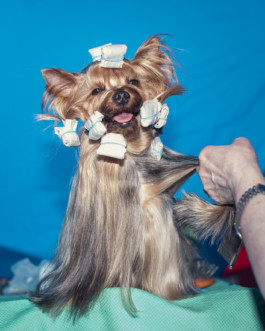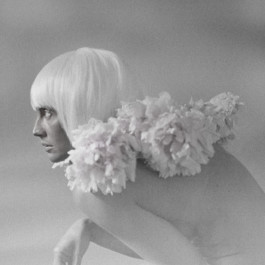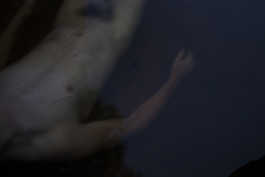Uncertain States Scandinavia
They open up their studio to launch their first newspaper, so we had a talk with the small group about the project itself, norwegian photography and of course any plans for the future.
Who are behind Uncertain States Scandinavia and what are your practices?
Uncertain States Scandinavia consists of Tor Simen Ulstein, Astrid Gjersøe Skåtterød and Charlie Fjätström. We met through school in Trondheim and ended up in Oslo as freelance photographers struggling to make a living. We are all madly in love with photography, and like to call it lens-based art. And we are best of friends.
What was behind the choice of starting up a Scandinavian version of UCS – what do you hope it will do / result in?
Photography has so many different expressions, and in our Scandinavian photography scene we have noticed how that an expression has become equal to a “social-clique” - a group of photographers who has found their own kind and only talk to each other. If you are not a part of this clique they can seem so pretentious. As a reaction to this we started Uncertain States Scandinavia to try to gather all of the photographers without thinking about what expression, but rather categorize the photographers on what they are about and what motif, subject or idea they are interested in. We are very interested in what photographers have to say as very often their images is not enough, observers we talk to like to know the background to understand the photographer´s work. Therefore, we share images along with statements or text that go with the projects. Our vision is that UCS Scandinavia will eventually invite the photographers to have talks and group exhibitions together as London-based Uncertain States have proven to be very successful. Uncertain States have first Tuesday talks, we have been to one or two of them, where they invite photographers to talk about their images and to discuss photography.
Explain the name Uncertain States; what does it mean and how does it relate to your organization?
It can be a state within your life, in your art, in the project, in the world. A state from the past, in the present or the future. It is open for interpretation.
How did you choose artists for the first newspaper - what did you look for in terms of representation of your agenda? Was this important at all?
We have spent a lot of time and energy talking to photographers we know and like, that we’ve invited to participate in the first newspaper. This issue is without a theme, but we will publish three more issues in 2016, have pictured theme-based newspapers in the future. The thought is that our selection of photographers might have something in common, like style, genre, subject etc.
You chose the newspaper-format as the medium, and on top of that it’s free for anyone to take away. Why did you decide on this as the main outlet to reach your audiences?
We like the goofy size of old newspapers; because it’s such a large format it turns it into an alternative gallery in a way.
The point is to spread it as soon and far as possible, and this format gives us exactly this possibility. We could make a book and sell it for £25, but it would have reached less people.
Where can one get hold of a copy?
We’re called Uncertain States Scandinavia because we invite photographers to participate in Sweden and Denmark, in addition to Norway. Which is why we have the newspaper available in several galleries, mueums and schools in the different countries.
UCS in the UK stated that they aim to “in short, be a flagship for contemporary British Photography”. Do you share similar ambitions for the Norwegian Photography scene?
Uncertain States is our collaborative partner, which means our ambitions are as big as theirs. Charlie and Tor Simen are previous students at CASS, where two of the UCS-founders are teaching. We have previously worked with them on their annual exhibition, where a selection of artists from the newspaper are being exhibited. We love the work they’re doing in the UK, and they have inspired us to put a similar alternative gallery into life here in Scandinavia.
Compared to the British photography scene, who are the Norwegian audience and are they different from the British in any way?
The first thursday of the month all of the galleries have vernissages. When we lived in London, Vyner Street was the place to go. You started in one end of the road and worked yourself down to the end; it’s like a Tom Waits race, where you pick up a beer on the way from each gallery to the next. It’s a very social event where the art is central and crowds celebrate the newly opened exhibitions. We have a dream that in the future we will organise a photomonth here (in Oslo), and we are happy to hear from anyone and everyone who is interested in starting or participating in this kind of event.
What are your future prospects for Uncertain States Scandinavia, both internally and externally?
This is a long-term project and a platform for photographers to show their work as cheap as possible, and at the same time reach a broad audience. We’re a non-profit organisation, so we want the project to grow but every penny we get in goes to UCS and will give better offers for our contributors. We want the newspapers to be displayed at the different art-locations in Scandinavia in order to give the artists high exposure, and we hope that we as a driven artist organisation can create more interest and engage audience in lens-based art.
As your name states, you aim to cover the all of Scandinavia. Do the photography scene in each country differ much - of so what are the key differences (both positive and negative)?
It’s very difficult to define the different styles, because there are variations of different photographic styles within the Scandinavian countries. One can see a more harsh and “direct” style in Sweden and Denmark, than Norway. You can still see traces of Christer Strömholm’s black and white documentation of people, which is quite apparent through the work of Anders Pedersen and JH Engström. Denmark has a similar style with Jacob Aue Sobol, amongst others. In Norway it’s the more philosophical and beautiful photography like the works of Alveng, Sandberg and Maning, who have been more poetic than their Scandinavian colleagues. One can see visible traces in more recent Norwegian photography, where a lot of work goes into the concept where the idea has almost become more important than the photograph itself. There is a big interest in photojournalism in Norway, but it is considerably nicer and almost a bit shy in its documentation of people.
Lastly, we welcome submissions from lens-based artists for further publications. For all enquires please contact info@ucsscandinavia.com.
We also have a website! www.ucsscandinavia.com.
If you want to subscribe to the newspaper also contact info@ucsscandinavia.com
We have provided a full list of places where you can pick up a copy:
Fotogalleriet, Oslo
Preus museum, Horten
Blokk, Bergen
Babel, Trondheim
Uks, Oslo
Boa, Oslo
Fotografiens Hus, Oslo
Kristiansand kunsthall
Kunsthall Stavanger
Oslo fotokunstskole
Hasselblad Center, Göteborg
Konstfack, Stockholm
Aros Aarhus museum of modern art
Galleri Image, Aarhus
Fotografisk Center, København
Fatamorgana, København
Fotogalleriet Format, Malmö
Interview
Author: Julie Lauritzen
Photography:Mona Ødegård, Inga Björk, Janne Amalie Svit
Web: ucsscandinavia.com


